Olive mushroom: Omphalotus olearius
4 years ago · Updated 6 months ago
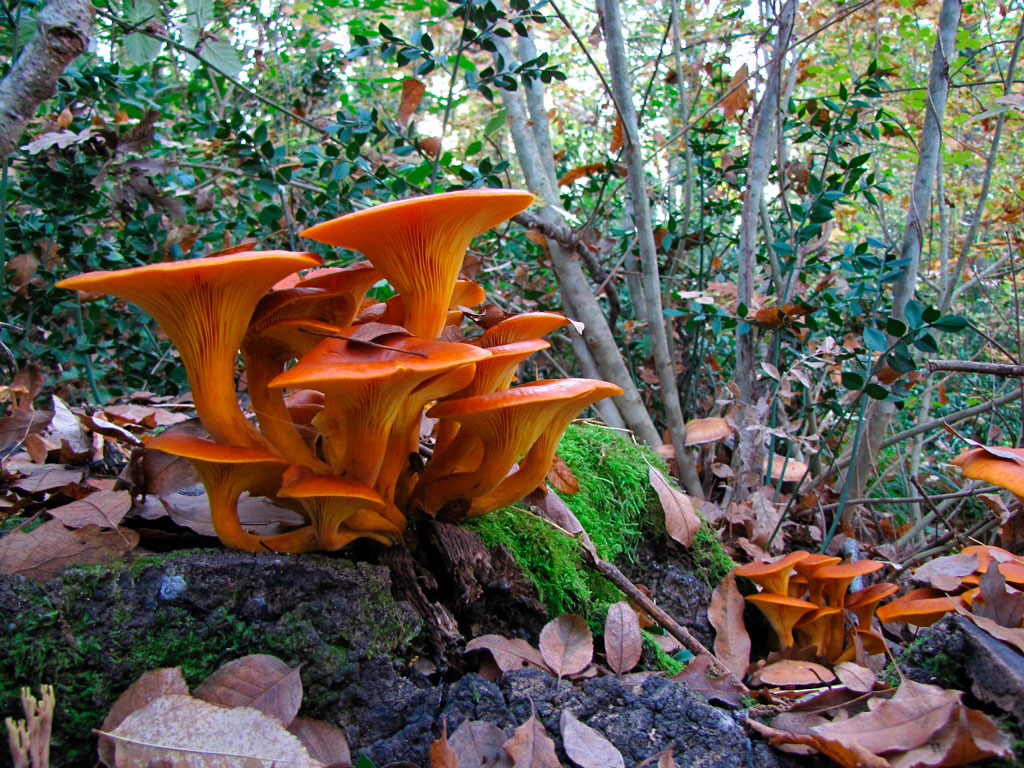
- Omphalotus olearius: a fairly common Mediterranean poisonous species
- Characteristics of the Omphalotus olearius mushroom
- What are the main characteristics of the olive mushroom?
- What are the habitats of the olive mushroom?
- What is the fruiting period of the olive mushroom?
- Can the olive mushroom be confused with other edible mushrooms?
- Symptoms of olive mushroom poisoning
Omphalotus olearius: a fairly common Mediterranean poisonous species
More important than knowing about edible mushrooms is recognizing with certainty toxic and poisonous mushrooms that can cause mischief. Today, we present the olive mushroom, a variety that, year after year, causes many serious intestinal disorders in those who dare to confuse it.
To be able to search for mushrooms in complete safety, we recommend that you equip yourself with everything you need, although the main thing is a good mushroom basket accompanied by a good mushroom knife.
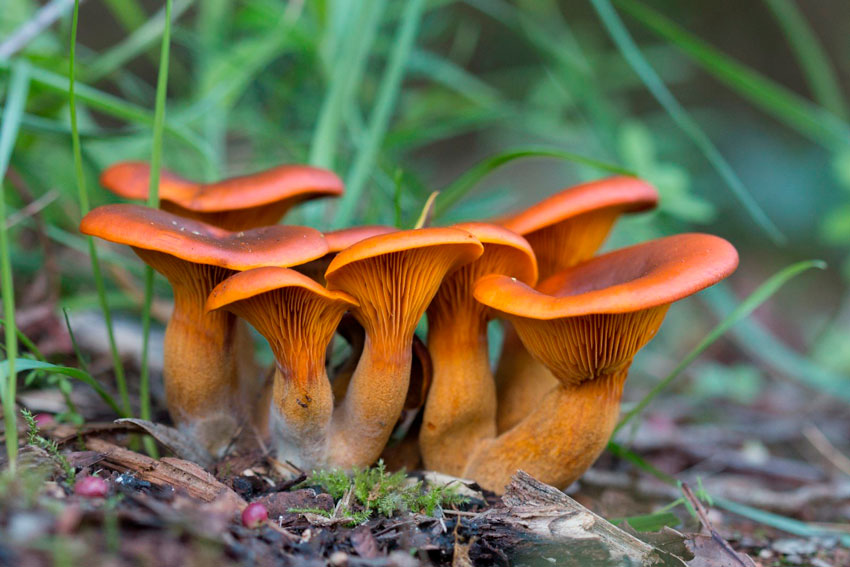
Characteristics of the Omphalotus olearius mushroom
This Mediterranean thermophilic species is by far the one that generates the highest number of intoxications year after year. They are not extremely serious, but cause severe intestinal problems, so knowing it in detail will help reduce them
Names of the olive mushroom
Its popular denominations are numerous. Let's not forget that we can practically find it all over the Iberian Peninsula, mainly associated with olive trees. For this reason, the tree features in many of these popular names.
In Spanish, it's called seta de olivera or seta de olivo, in Catalan gírgola d'olivera or bolet d'oliu. Its scientific name is Omphalotus olearius.
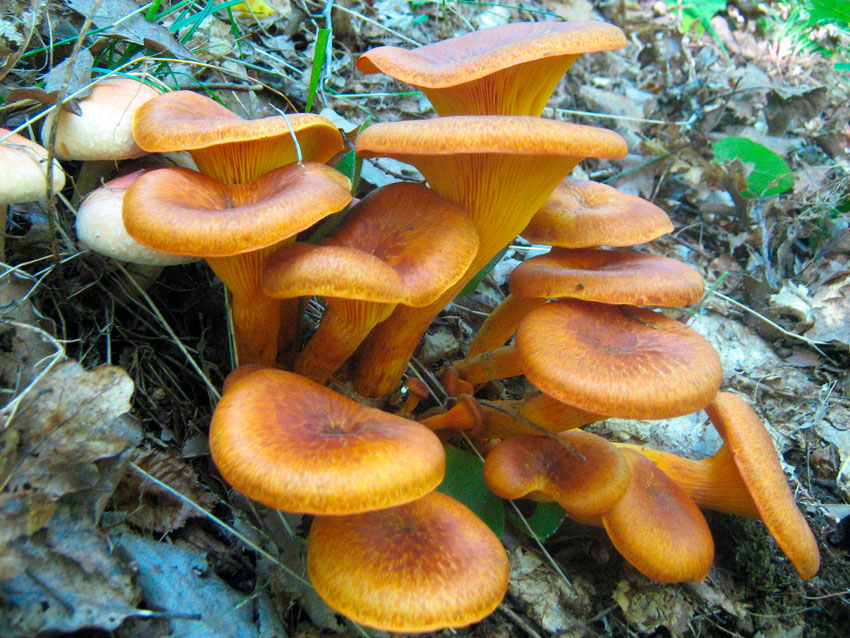
What are the main characteristics of the olive mushroom?
The olive mushroom is characterized by the fact that it reaches a large size, with a cap that varies from 4 cm to over 20 cm in highly developed specimens
The cap of O. olearius is convex in the young stage, becoming flat and finally funnel-shaped in adult specimens
The cuticle of the cap is fibrous, although its orange-red color turning to orange-brown is one of its main characteristics. Lamellae decurrent, tight and fine.
The foot is generally larger than the diameter of its cap, usually eccentric and orangey yellow in color
The chair of this mushroom is very consistent and fibrous, and is rarely found worm-eaten. Its odor is almost imperceptible, and its flavor is similar to that of oil
As a curiosity, it's worth noting that this is a mushroom that glows in the dark. It exhibits bioluminescence. It's easy to observe this phenomenon in the dark of night
What are the habitats of the olive mushroom?
This is a typically Mediterranean mushroom. Its fruiting form is characteristic, in large groups although it is common to find isolated specimens. We'll find it on stumps or branches mainly of olive trees, although it's normal to also find it on cork oaks, holm oaks or certain shrubs such as cistus.

What is the fruiting period of the olive mushroom?
This is a typically autumnal species, so we'll be able to find it from the beginning of October until almost the end of January. Yes, it depends
Photographs of Omphallotus olearius
We present a few images of olive mushrooms so that you can see their morphology, their reddish tones, and so that you can distinguish them on your outings in the mountains.
If you have an image of an olive mushroom you'd like us to publish, send it to us and we'll add it to this collection.
Can the olive mushroom be confused with other edible mushrooms?
Almost all confusions that occur with this mushroom are due to its resemblance to the girolle, C. cibarius, C. pallens. It shares the habitat with both sometimes. Not to be mistaken, we should note that the tone of the olive mushroom is reddish-orange, while chanterelles are much more yellowish.
The lamellae of Omphalotus olearius break easily, unlike Cantharellus, which have folds rather than lamellae. Aroma is another determining factor. Chanterelles are highly aromatic, while the olive mushroom has an almost imperceptible aroma.
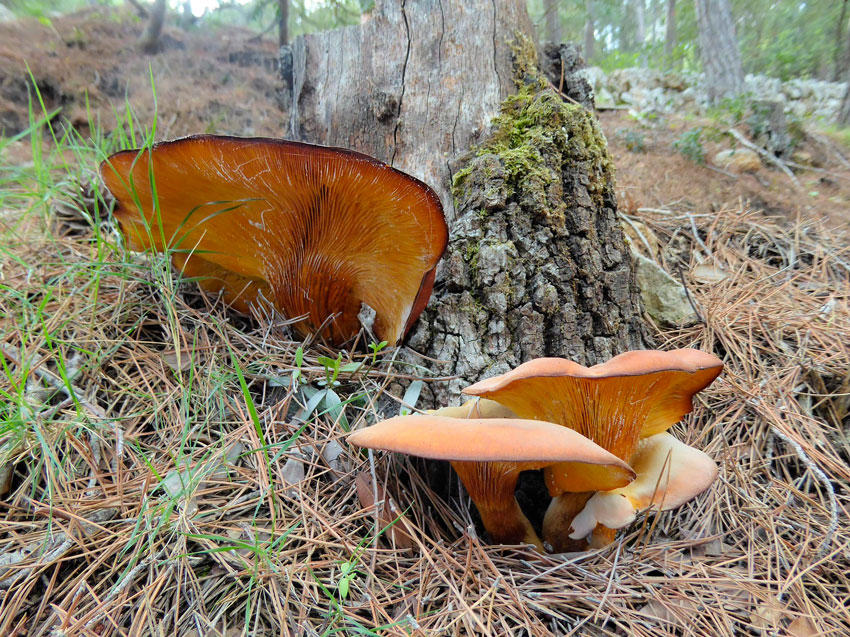
Finally, it should be noted that the olive mushroom is lignicolous, growing on wood remnants, whereas C. cibarius or C. pallens grow on soil.
Another possible confusion is with the false chanterelle, Hygrophporopsis aurantiaca, a species of no culinary value that sometimes shares a habitat with O. olearius. In these cases, the difference in size between the two is decisive, as the false chanterelle is much smaller in size.
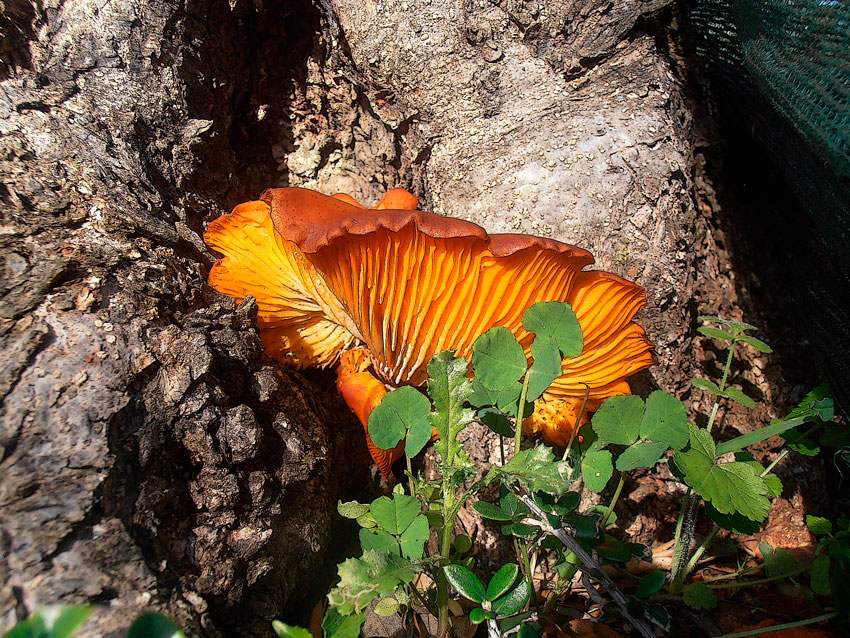
Symptoms of olive mushroom poisoning
The vast majority of intoxications produced by olive mushroom are not fatal, but are responsible for serious intestinal disorders which, in many cases, require hospitalization.
After ingestion, the first symptoms appear around 6 h and generally include diarrhea, intestinal pain, vomiting and nausea. Symptoms generally disappear within 24 to 48 hours.
In case of consumption of Omphallotus olearius, it is recommended to call the toxicological poisoning service, 915620420, and to go urgently to the nearest health center
Now that you know about this dangerous mushroom, you'll surely avoid confusing it with chanterelles.
Health and mushrooms, but edible

Te pueden interesar